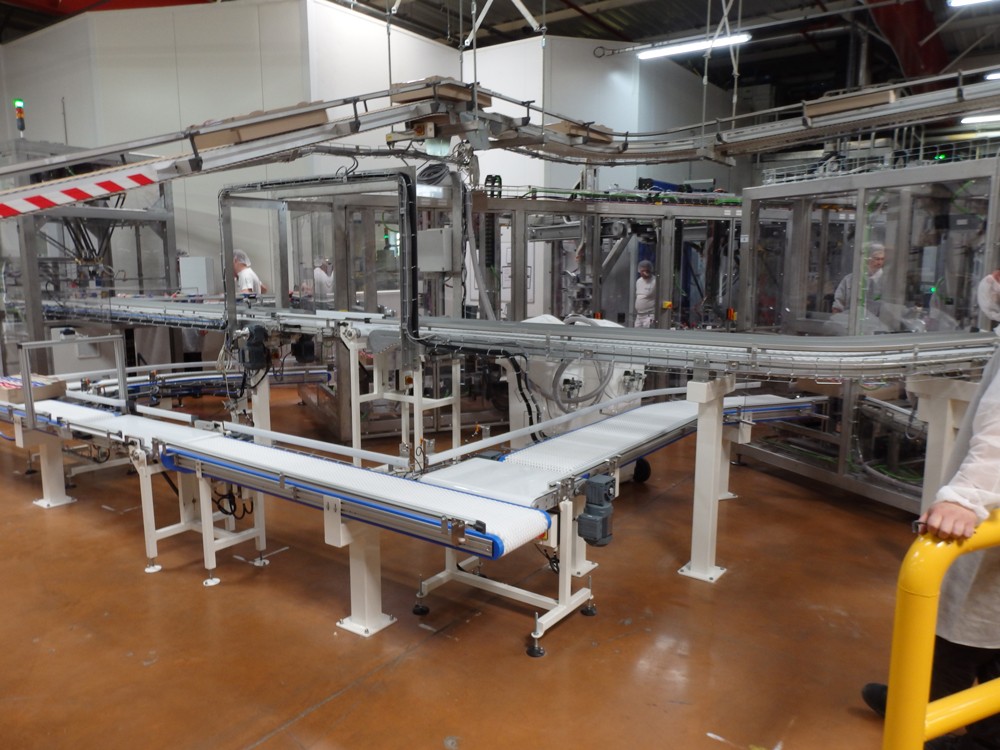Innovative Industrial Packaging Solutions: Boosting Your Products
Innovative Industrial Packaging Solutions: Boosting Your Products
Blog Article
Effective Industrial Recycling Solutions for Lasting Packaging: A Comprehensive Overview
That's where this thorough overview on effective commercial recycling services for lasting product packaging comes in. By exploring vital areas such as packaging product selection, making for recyclability, carrying out recycling framework, collaborating with reusing partners, and monitoring and measuring reusing success, this guide will certainly equip you with the expertise and tools needed to make informed choices and drive favorable modification within your company. Whether you're a packaging specialist, sustainability manager, or merely interested in the topic, this overview will certainly provide useful insights and methods to aid you navigate the globe of sustainable packaging.
Product Packaging Material Choice
The choice of product packaging products plays a crucial role in making certain the sustainability of commercial reusing remedies. The choice of materials is key in minimizing environmental impact and maximizing recycling performance when it comes to lasting product packaging. Choosing the ideal materials can help decrease waste generation, conserve sources, and advertise a circular economy.
One important factor to take into consideration in product packaging product choice is recyclability - industrial packaging solutions. Products that can be quickly recycled and included back right into the production cycle are preferred. Materials like cardboard, paper, glass, and particular types of plastics can be reused several times without losing their high quality. On the other hand, products that are challenging to reuse, such as blended plastics or non-recyclable composites, can develop difficulties for the reusing process and might wind up in landfills or burners.
Another factor to consider is the usage of naturally degradable and renewable materials. Product packaging made from renewable resources, such as plant-based plastics or biopolymers, can aid decrease reliance on nonrenewable fuel sources and reduce environment adjustment. Additionally, naturally degradable products break down naturally gradually, reducing the build-up of waste in garbage dumps.
Furthermore, the weight and volume of packaging products need to be minimized to decrease transport prices and power consumption. Lightweight materials not only need less sources throughout production but likewise add to reduce carbon exhausts throughout transport.
Designing for Recyclability
In order to guarantee the recyclability of packaging materials, thoughtful style is essential. Designing for recyclability involves producing packaging that can be quickly sorted, separated, and processed in recycling centers. One important aspect of designing for recyclability is the choice of products. Product packaging developers must focus on using products that are widely approved for recycling and have established recycling facilities. Materials such as glass, light weight aluminum, and certain sorts of plastic, like family pet and HDPE, are generally reused and should be liked over materials that are challenging or costly to reuse.
One more vital consideration in designing for recyclability is the removal of unnecessary parts or materials. By minimizing the variety of layers, finishes, and extra parts, product packaging can be made simpler and less complicated to recycle. Additionally, developers ought to intend to decrease making use of blended materials, as they can make complex the recycling procedure.

Implementing Recycling Framework
Effective execution of recycling facilities is essential for the success of commercial recycling services. Without correct infrastructure in position, the recycling process comes to be ineffective and inefficient, preventing the overall goal of lasting product packaging.
To execute recycling framework effectively, a number of vital elements click here for more info require to be taken into consideration. Firstly, there must be an efficient collection system that facilitates the separation and collection of recyclable products. This can consist of marked reusing bins in public spaces, in addition to collaborations with waste monitoring firms for curbside pick-up and sorting.
Once gathered, the recyclable materials need to be delivered to reusing centers in click to read a prompt fashion. This requires efficient logistics and transportation networks, ensuring that the products reach the appropriate centers immediately.
At the reusing centers, progressed sorting and handling technologies should be in place to separate various kinds of products properly. This consists of using automated arranging equipments, optical scanners, and hand-operated sorting strategies.
In addition, there need to be a durable market need for recycled materials. This can be achieved through collaborations with manufacturers and industries that make use of recycled products in their manufacturing processes. Creating a stable market for recycled products incentivizes the reusing market and promotes the round economic situation.
Teaming Up With Recycling Allies

One key facet of working together with recycling companions is the facility of clear communication networks. It is very important to establish open lines of interaction to assist in the exchange of information, updates, and feedback. This enables both celebrations to stay informed concerning the development of recycling campaigns and address any type of challenges or concerns that may emerge.
Furthermore, collaboration can entail collaborations in implementing and making recycling programs. Reusing partners can supply valuable understandings and guidance in establishing efficient collection systems and establishing the most proper recycling technologies. By collaborating, companies and reusing partners can enhance the reusing procedure and reduce waste.
In addition, collaboration can prolong past the operational elements of reusing. It can also include webpage campaigning for and education efforts. By signing up with pressures, businesses and recycling companions can elevate awareness regarding the value of reusing and promote the adoption of sustainable product packaging techniques amongst consumers and other stakeholders.
Tracking and Measuring Recycling Success
To make sure the performance of commercial reusing solutions and the accomplishment of sustainable product packaging objectives, it is crucial for companies and their recycling partners to establish a detailed system for monitoring and gauging reusing success (industrial packaging solutions). Determining and tracking recycling success enables companies to examine the effect of their reusing initiatives, recognize areas for enhancement, and established purposeful targets for future development
One means to track reusing success is through using data collection and evaluation tools. By accumulating data on the quantity of packaging waste created, the percent of waste that is reused, and the kinds of materials being recycled, companies can acquire important insights right into their reusing performance. This data can then be assessed to recognize fads, patterns, and areas of inefficiency.
Another vital facet of tracking and measuring reusing success is developing standardized and clear metrics. This permits services to compare their performance versus market benchmarks and track their progression gradually. Metrics such as recycling prices, waste diversion prices, and greenhouse gas emissions can provide a measurable procedure of a service's recycling success.

Conclusion
To conclude, carrying out efficient commercial recycling options for sustainable product packaging needs careful factor to consider of product packaging material option, developing for recyclability, implementing reusing facilities, working together with recycling partners, and tracking and gauging recycling success. By integrating these practices, services can contribute to an extra environmentally-friendly and sustainable approach to product packaging, reducing waste and advertising the round economic climate.
By exploring crucial locations such as packaging product selection, creating for recyclability, implementing recycling framework, collaborating with reusing companions, and tracking and determining reusing success, this guide will outfit you with the knowledge and tools needed to make informed decisions and drive positive adjustment within your organization. Packaging developers need to prioritize the use of products that are extensively approved for recycling and have developed reusing frameworks.Collaboration with recycling partners is crucial for the successful application of commercial reusing remedies and the achievement of sustainable packaging goals. By joining pressures, organizations and recycling partners can raise understanding concerning the relevance of recycling and promote the adoption of sustainable packaging practices among consumers and other stakeholders.
By gathering information on the quantity of product packaging waste created, the percent of waste that is reused, and the kinds of products being reused, organizations can obtain beneficial understandings right into their reusing efficiency.
Report this page